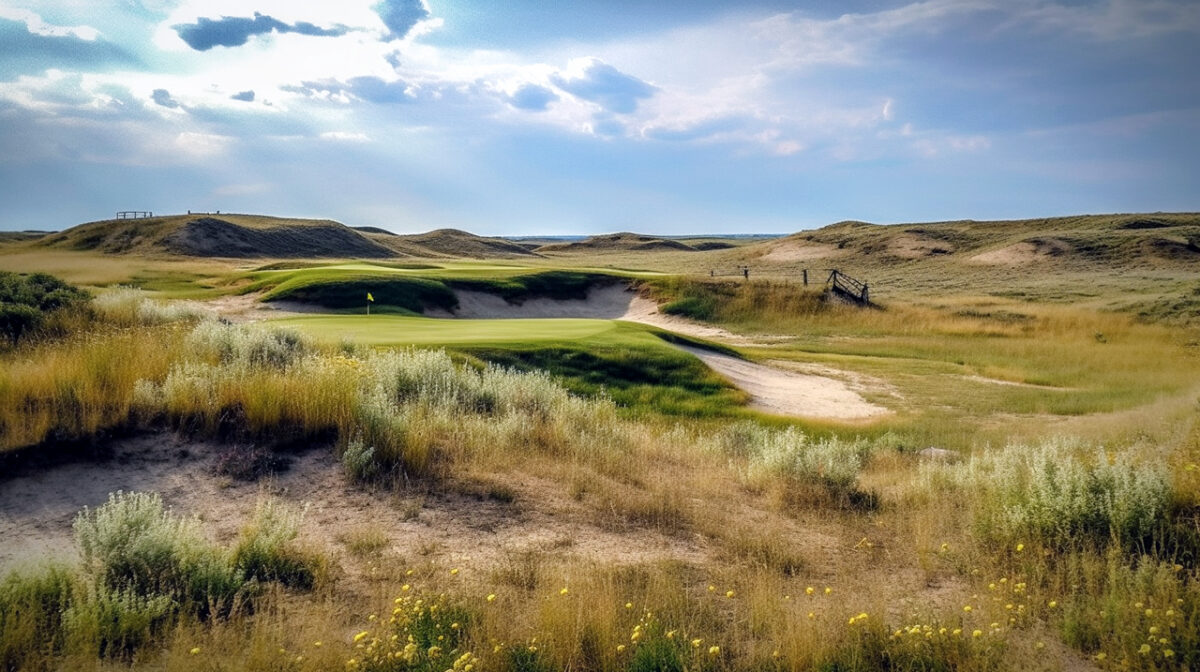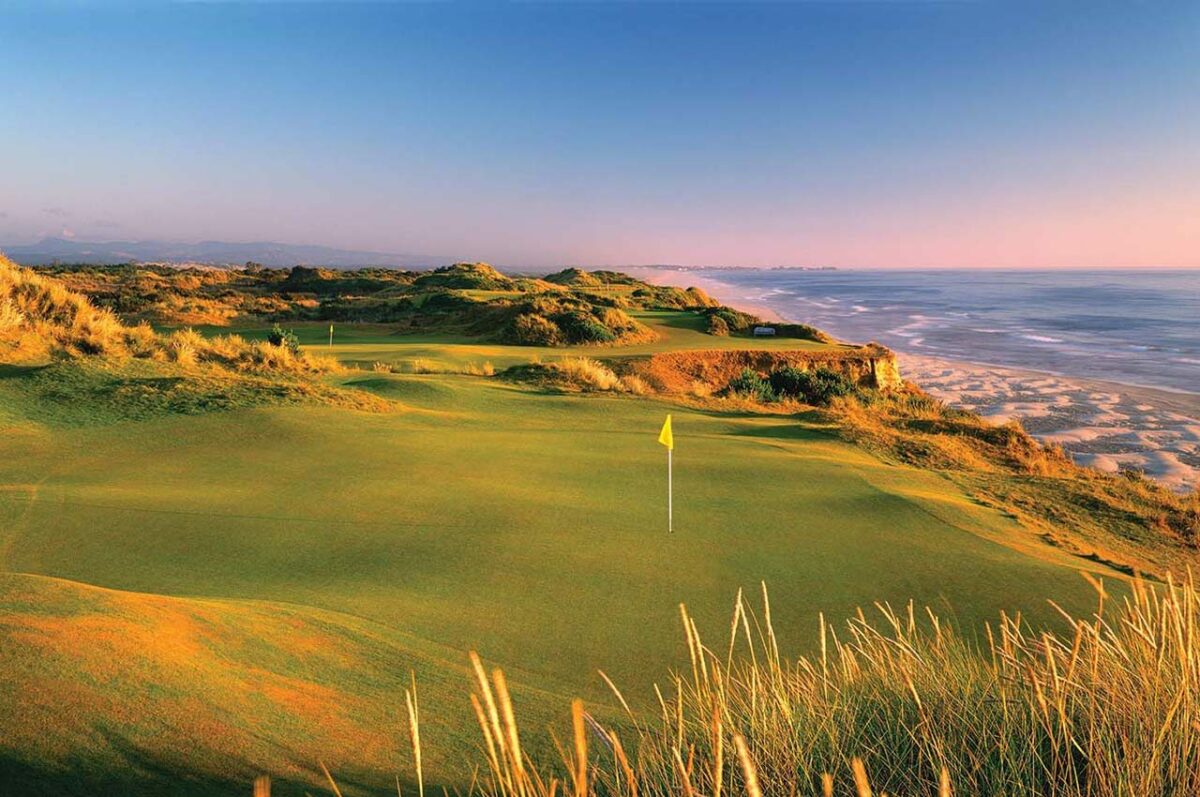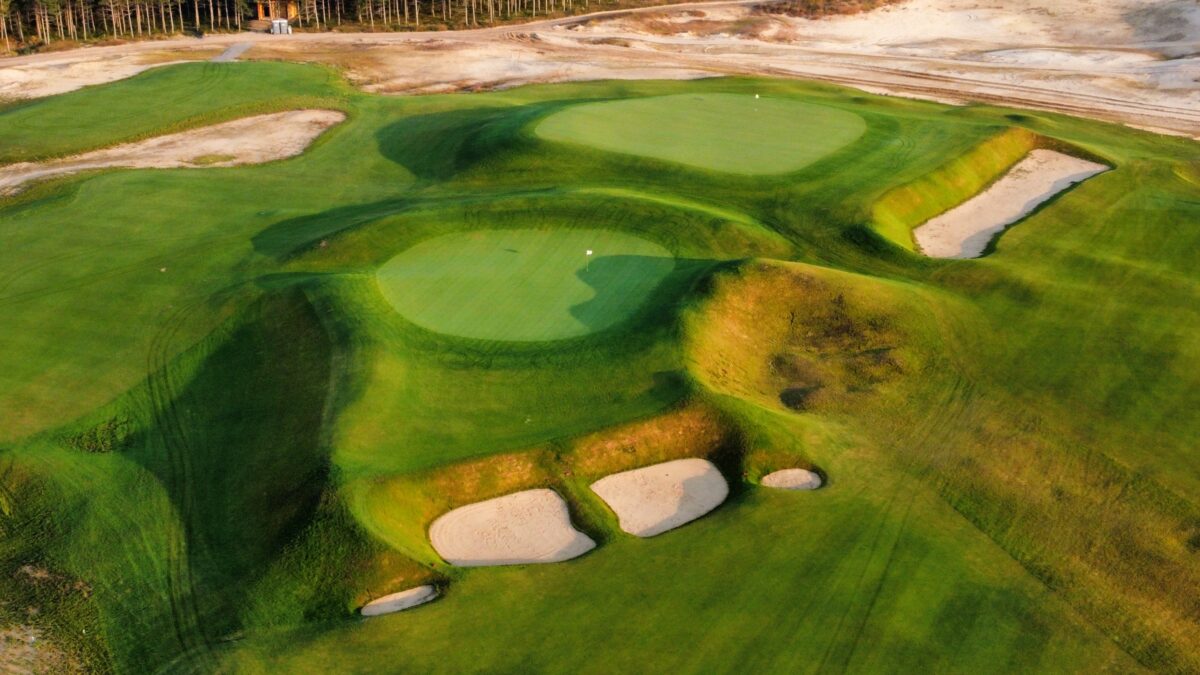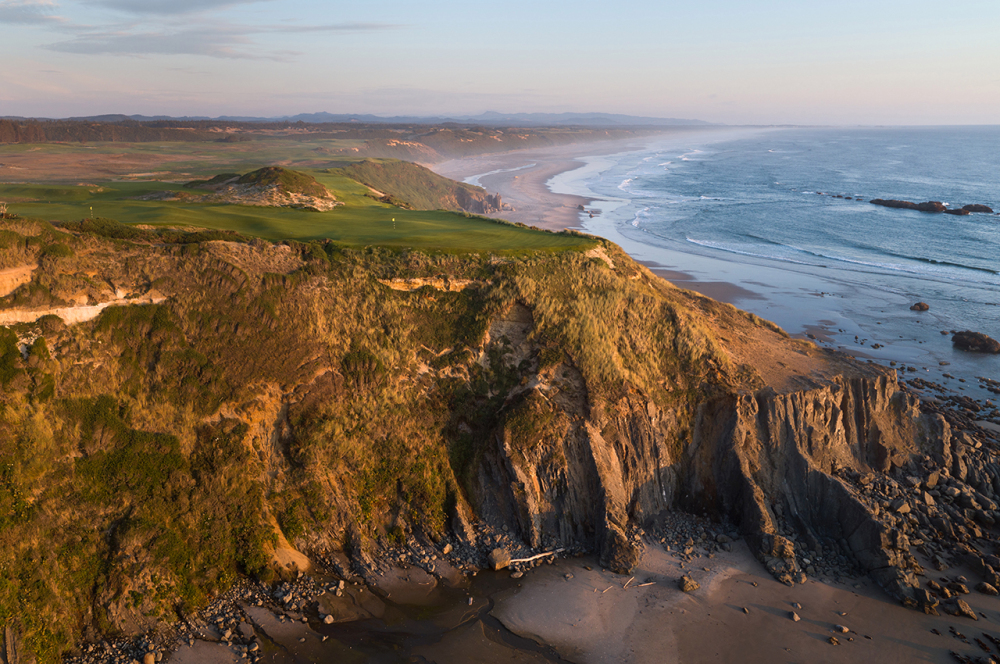Sure, it might have involved a bit of trespassing, but Michael Keiser has proved that not all who wander are lost.
That classic J.R.R. Tolkien line is apt, as Keiser’s head apparently is always on a swivel as he searches for sand and hills and available land suitable for great golf courses. Developer and co-owner of Sand Valley Golf Resort along with his brother, Chris Keiser – and the son of Bandon Dunes Golf Resort founder and owner Mike Keiser – Michael brims with energy in his hunt for a next interesting golf opportunity.
Now on the slate is the public-access Rodeo Dunes in Colorado. The developers officially announced Tuesday that construction soon will start in earnest on 36 holes across 2,000 acres of idyllic sand dunes less than an hour northeast of Denver. Preview play might be available on one of the courses by the end of the 2024 with that course fully opening in 2025, Michael Keiser said, adding that the timeline is still loose but the second course likely will follow a year later. The order of which course opens first is still to be decided.

Both course routings have been completed, or at least as complete as they can be before construction progresses with possible changes. And they likely won’t be the only two courses there for long – there’s room to build as many as six full courses at the site. A short course and Himalayas-style putting green are expected to be added soon, and Michael Keiser said eventually there might be accommodations but that nothing is set in stone. The property will operate as part of Dream Golf, a collaboration with Bandon Dunes, Sand Valley and Cabot.
The Keiser brothers will lean on the famed design team of Bill Coore and Ben Crenshaw to design one of the 18-hole layouts, a running relationship that has proved extremely successful for the Keiser family and partners with previous tracks such as Bandon Trails and the Sheep Ranch in Oregon, the eponymous Sand Valley course in Wisconsin and Cabot Cliffs in Nova Scotia.
The other 18 goes to a new signature designer but a familiar face: Jim Craig. A longtime course shaper for Coore and Crenshaw, Craig gets his first crack at a routing of his own in Colorado. Michael Keiser established a bond with Craig during construction of Sand Valley, and Keiser said he couldn’t be more excited to give the Texan a breakthrough opportunity at Rodeo Dunes.
“He’s a bit of a savant,” Michael Keiser said of Craig, who in his 25 years working as an associate for Coore and Crenshaw has contributed to layouts such as East Hampton and Friar’s Head in New York, Old Sandwich in Massachusetts and the aforementioned Sheep Ranch. “He sees things other people don’t see. And I’ve learned to trust that. … He has a very special mind. You’re not always going to say, this hole reminds of ‘blank.’ You’re going to say, I’ve never seen a hole quite like that before.”
When the Keisers first became interested in the ranch land that will become Rodeo Dunes, Craig would drive up from Texas to walk the site and offer his opinions at Michael’s request. His enthusiasm was a major part in landing his first solo design, Michael Keiser said.
Craig is a soft-spoken man of long labor and relatively few words, but his sharp wit shines through in conversation. He said that after landing the job at Rodeo Dunes, he feels like Forrest Gump during the movie character’s first meeting with Lieutenant Dan at a U.S. Army camp in Vietnam. Craig quotes the line, “I sure hope I don’t let him down.”

It will be a big job, for sure, as Michael Keiser has a goal of greatness. He said he’s taking inspiration from Sand Hills Golf Club in Nebraska, also designed by Coore and Crenshaw and ranked No. 1 on Golfweek’s Best list of modern courses in the United States.
“We will strip everything out but the bare essentials to have the purest form of golf that I think we’ve ever done,” Michael Keiser said. “Our goal is to present golf in its purest form the way I think Sand Hills has done as well as anyone in this country. Bandon Dunes is that in so many ways, but if I was to come down to it, Sand Hills is even more of the model because I think it’s even more raw and pure. So our goal is to build Sand Hills for the public, with multiple courses.
“I say all this humbly. We always start with who we aspire to be. … There’s never going to be another Sand Hills. Ever. Period. Full stop. But everything they’ve done well there is what we’re trying to be.”
The land certainly appears to lend itself to such aspirations. Michael Keiser said the natural site will require minimal shaping, making construction relatively easy now that the two routings have been roughly determined. The site is full of sandy blowouts and dunes that reach 80 feet in height, which takes us back to that trespassing interlude mentioned above.
Michael and Chris were stuck in an airport years ago, discussing what would make ideal sites for more golf. They mentioned the private Ballyneal Golf Club, a Tom Doak layout in Colorado that ranks No. 4 among all modern U.S. courses. Could there be much more land like that available in Colorado, they wondered. Michael Keiser studied Google Earth and topographic maps for clues, and curiosity eventually led him onto an airplane then onto Interstate 76 northeast of Denver. He found a site that had caught his eye, and he couldn’t believe the dunes.
Michael said exuberance got the best of him and he took off jogging through the golden hour as the sun set, trying to see what was beyond each of the ensuing hills. The place stretched for miles, full of potential golf holes. But as vast at that sky might have been, Keiser wasn’t alone.
“I was trespassing on the site, which is probably a dangerous mistake in hindsight, in cowboy country,” Keiser said. “I did get caught by a rancher, who turned out to be a very pleasant fellow. But he wasn’t thrilled that I was trespassing. He was 200 yards away, and I’m walking toward him and we’re both thinking, ‘How’s this going to go? This might not be good.’
“I just walked right up to him and asked, ‘Are you a golfer?’ And he was sort of startled, and he said ‘Yeah, I do play sometimes.’ So I said these dunes are fabulous for golf, and he looked at me cross-eyed. But we had a nice chat. He was a really friendly guy, and he kindly escorted me off the property. That’s how it all started.”
Turns out the land was owned by the Cervi family, owners and hands-on operators of a major rodeo production company – real cowboys. Michael said it took years for him, a Chicago developer, to fully earn their trust. But after they “realized I wasn’t crazy, or too crazy,” the Cervis agreed to sell a portion of ranch land for golf development, and the family will continue as partners in Rodeo Dunes, Michael said.

It’s a busy time for the Keiser brothers, who soon will open the much-anticipated Lido course constructed by Doak, the third traditional 18-hole layout at Sand Valley, with member play beginning in May and opportunities for resort guests to play it at the end June. They also are opening Doak’s Sedge Valley course at Sand Valley, with limited preview play possibly beginning this year and the full opening coming sometime in the spring of 2024. And no doubt there are other potential projects around the country – speculation swirls constantly about where the Keiser family might build next.
Michael Keiser, with a fair dose of boyish enthusiasm, said it’s all about finding even more fun places to hit a golf ball, even if it happens to be found in a rancher’s field.
“The site feels like you’re in Ireland,” he said of Rodeo Dunes. “We’ve had a drought for two years so it isn’t green now, but when I first stepped on the property it was emerald green. The contours and the topography are very Irish. I mean, it feels like you’re at Lahinch. That’s the size and topography and scale and amplitude of those sand dunes. …
“My dad started with the idea of elite private golf, stripping it down to the pure golf, and bringing it to the public. That’s what we’re trying to do.”













